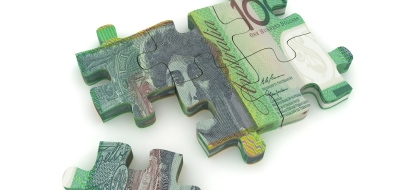A Banknote is More Than Just a Banknote
16 June, 2013
Editor’s Note: With this most recent article, provided by Astrid Mitchell of Currency News, we are encouraged to look beyond the monetary value of a banknote, to examine when a banknote is more than just a banknote. National identity, sovereignty, seignorage revenue and achievement are among the myriad less obvious values that we as people should be proud of, regardless our country of heritage or residence. We thank Astrid and Currency News for providing this insightful article. We urge you to consider supporting Currency News with your subscription.
A banknote, as defined by the Oxford English Dictionary, is ‘a banker’s (especially a central banker’s) promissory note, payable to the bearer on demand, and serving as money’. Stripped down to the bare essentials, it is a piece of security designed and-printed rectangular paper (or polymer) with security features that carries both a financial value and is used as a medium of exchange.
Of course this elemental description belies not only the complexity of the banknote itself, but also  the critical role that it  plays in society. By enabling transactions to take place between and among individuals and organisations, it is one of the building blocks for commerce, trade and hence economic development and empowerment.
Wider Macroeconomic Role
And according to Benoît Coeuré of the ECB (see page 3 – Currency news, May 2013 edition), it has a wider macroeconomic role too – demand providing a key variable for measuring economic activity and a key driver of liquidity required by banks. Seigniorage, meanwhile, provides an important source of revenue for central banks and, by association, the taxpayer.
Not bad for a simple piece of paper!
The functional role of banknotes aside, they also play an important psychological role. As is so often said, banknotes act as a ‘calling card’ for nations, underpinning national pride and sovereignty, binding together countries that are part of monetary or political unions, reinforcing cultural traditions and providing an emotional bridge between state and citizen.
A number of examples of this wider dimension to banknotes is provided in this issue alone. Canada’s pride in, and tradition of, scientific endeavour is demonstrated in both the designs that it has revealed this month. Winston Churchill – a political giant of the 20th century in the UK whose appeal bridges the political and generational divide – is a popular choice for the next £5 note. Israel’s new notes featuring poets cast the spotlight on a literary heritage often overlooked in the current political climate. Even the ECB, which has to navigate a minefield of national sensitivities within the eurozone, has succeeded in drawing on a symbol of unity for the new series in the form of the mythical goddess who gave her name to the continent.
Another good example is provided by the article on the future of banknotes in Scotland, which is currently part of the UK but where a referendum on independence will be held next year.
A complex number of issues need to be clarified first regarding an independent Scotland’s position vis-à -vis, for example, membership of such organisations as NATO, the IMF and the EU, the division of the UK national debt, allocation of oil and gas resources etc. The nationalists are currently making claims on such positions, the most contentious of which is proving to be the currency.
The  pro-independence movement is claiming that  Scotland would simply enter into a currency union with the UK, with all current arrangements – including the issue of Scottish notes – continuing as before.  A claim which has had cold water poured over it by the UK government.
The Scots treasure their banknotes, and no UK government in the three centuries since the Act of Union has attempted to get rid of this anomaly in currency issue. The same sensitivities can be seen in the low-key, conciliatory approach that the current government has taken towards the question of independence, to avoid fanning further the flames of nationalism.
Gloves Come Off
But now, for the first time, the gloves are coming off – with the UK government stating that there is no guarantee that it would enter into such a union, and that – even if it did – historical arrangements governing the issue, and underwriting, of Scottish notes would be extinguished.
The irony of a potential situation in which Scotland becomes independent, only to see its  cherished banknotes disappear and replaced by those bearing the name of the country from which it has just severed its ties, is not lost on those on either side of the debate.
More to the point, as one leading Scottish newspaper commented: ‘of all the arguments for and against Scottish independence, this must be one of the most arcane’. In other words, ‘given all that is at stake, why all the fuss over what, after all, is just a banknote.’
Except that, as we all know, a banknote is so very much more than just a banknote.
Editor’s Note: Below we feature a video of Canadian astronaut Chis Hadfield participating in the launch of the new $5 polymer banknote. This is an excellent example of a moment when a banknote is more than just a banknote.










